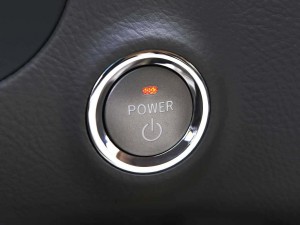
Former NHTSA Chief Joan Claybrook is leading the charge for ignition interlock devices to prevent drunk driving.
Safety advocates and other groups are looking to add some momentum to new ignition interlock technology that would prevent drunk drivers from getting behind the wheel and driving, saving thousands of lives annually.
Joan Claybrook, a former administrator of the National Highway Traffic Safety Administration (NHTSA), urged Congress to pass a law forcing automakers to include passive ignition-interlock systems in all new motor vehicles within as little as three years.
“I don’t know what’s the matter with the industry on this issue,” Claybrook said during testimony Thursday before the House consumer protection and commerce subcommittee.
The idea is to fit all new vehicles with an interlock technology that would force the driver to use a breathalyzer-style device or even a device that detects blood-alcohol levels of the driver. If the level is too high, the vehicle won’t start.
(New touch sensor could keep drunk drivers off the road. Click Here for the story.)

A prototype system used to detect drunk drivers might eventually be small and cheap enough to be built into a car's Start button.
Claybrook says the technology has been around since 2006 in some form or another. These devices are most commonly used in the vehicles of first offenders for drunk driving tickets. In fact
She said the notion of using technology to effectively immobilize drunk drivers has been around at least since 2006 and has been in use for several years now. She and others believe systems should be incorporated into all new vehicles, along with seat belts, rearview cameras and other lifesaving devices, she said, adding they could save as many as 7,000 lives annually.
In fact, automakers have been work on just such a device in conjunction with the National Highway Traffic Safety Agency since 2008. The Driver Alcohol Detection System for Safety or DADSS, has been in development for a decade, but still hasn’t found its way into new vehicles.
“Where is this system?” Claybrook asked. “It didn’t take that long to produce air bags. Air bags are a lot more complicated than this … and they cost a lot more.”
(Click Here for more about traffic fatalities falling in 2017.)
Robert Strassburger, who heads a coalition of 17 automakers working with the federal government to develop the technology, said a version for large commercial fleets may be ready next year. However, a system for the everyday driver’s vehicle is more complicated and has been plagued by false readings, giving the development team fits and delaying the possibility it could find its way into new vehicles.

Safety advocates are pushing for more passive devices like ignition interlocks to cut down on drunk driving injuries and fatalities.
Strassburger, who is president and chief executive of the Automotive Coalition for Traffic Safety, said it’s important to get the system right to avoid irritating sober drivers who had not been drinking. If it doesn’t work right, there is likely to be pushback by consumers, many of whom remember seat-belt buzzers from years ago.
The seat-belt interlock was made law in 1974. It required all front-seat occupants to wear seat belts otherwise the car wouldn’t start. However, the system was so inconsistent, consumers complained and the law was changed.
However, Claybrook and others such as Mothers Against Drunk Driving, aren’t buying the that the systems aren’t ready for primetime. “Our goal is to get this technology into vehicles for consumers to purchase as soon as possible,” said Helen Witty, president of MADD.
(Better headlights could save pedestrians’ lives. Click Here for the story.)
They point out that the recent rise in U.S. traffic deaths show that making life difficult for drunk drives is worth the hassle. Evidence shows that installing ignition interlock devices in the vehicles of people convicted of drunken driving has had a significant, beneficial impact on traffic safety.

Does it also check for marijuana influence?